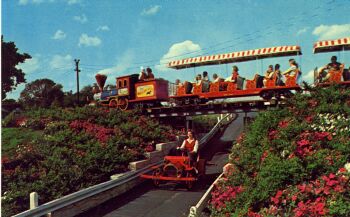
This is the last in my mini series about rock gardens and the plants that you can use to bring them to life and make you the envy of your neighbours. So please read on and enjoy , I hope that I have managed to give at least some of you a little Sprinkler System bit of inspiration to have a go at creating a rock garden.
Many rock garden plants cab be grown in the cracks between the paving stones of pa ths and patios. They relieve the monotony of plain slabs, but only a few such as Thymus and Acaena can withstand regular brushing and foot traffic. Excavate soil between the slabs using an old kitchen knife and gently insert and shake down the roots of the small plant or rooted cutting. Fill the hole with a planting mixture of 1 part topsoil , 1 part fine peat and 1 part coarse sand. Do this in autumn Spinkler Installation if possible, alternatively you can add planting mixture to the dug-out hole and sow seeds in spring. If the base is free-draining you can make a more spectacular display by removing one of the slabs and digging out enough foundation material for an 8 inch layer of planting mixture. Plant up and treat it like a raised bed. Recommended plants include Acaena, Arenaria, Armeria, Dianthus, Erica, Iberis, Saxifraga, Sedum and Thymus.
Rockwork:In rockwork it is the stones and not the plants which are the key feature. Grand rockwork is now a thing of the past, but you can still see examples at places like Chatsworth, Sezincote and Biddulph Grange. In recent years there has been a revival on a modest scale as interest in Japanese gardening has increased. The most popular arrangement is the sanzon or Three Buddha Stones which can be seen at Buddhist temple gardens throughout Japan. It is a triangle of rocks, an upright pillar-like one at the centre and two recumbent ones at the base. These stones must be weathered and naturally sculpted - hopefully th ey will be covered with moss and lichens. You ca use this sanzon as a lawn or patio feature, at the base you can plant low-growing plants such as Thymus or Acaena. Avoid any type which grows upright or has large flowers. You can extend this three-stone arrangement, but keep to odd numbers.
Alpine lawn:It's a nice idea, a lawn composed of a low growing rock garden plant rather than grass. Unfortunately, it is very difficult to create and even more difficult to maintain. Thymus is the usual planting material, but you can try Antennaria. Obviously all traces of weed and grass must be removed and the alpine lan material is planted in close groups. When established, hand weeding is necessary and even successful alpine lawns have to be renewed every few years. An easier alternative is the alpine wild flower garden. Sow a mixture of low-growing grasses and alpines which bloom before midsummer. Mow the grass in July and again in September. Sounds easy, but even here t he native grasses and weeds generally take over quite quickly.
Inveraray. Loch Melfort.JPG" width="366" />
http://plant.ezinemark.com/rock-gardens-and-rock-garden-plants.-part-3-17eae689ac5.html
No comments:
Post a Comment